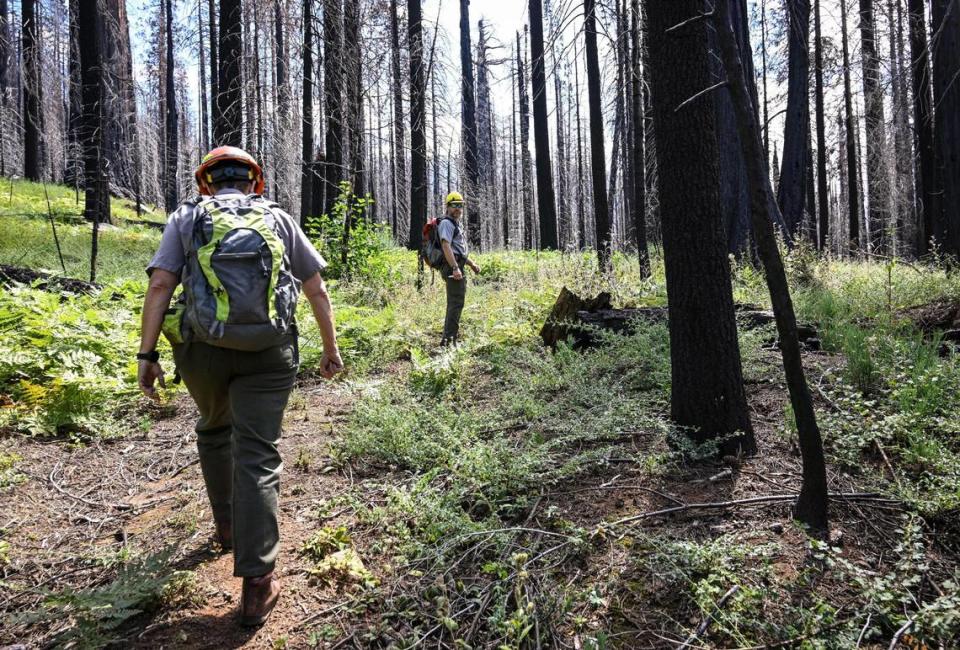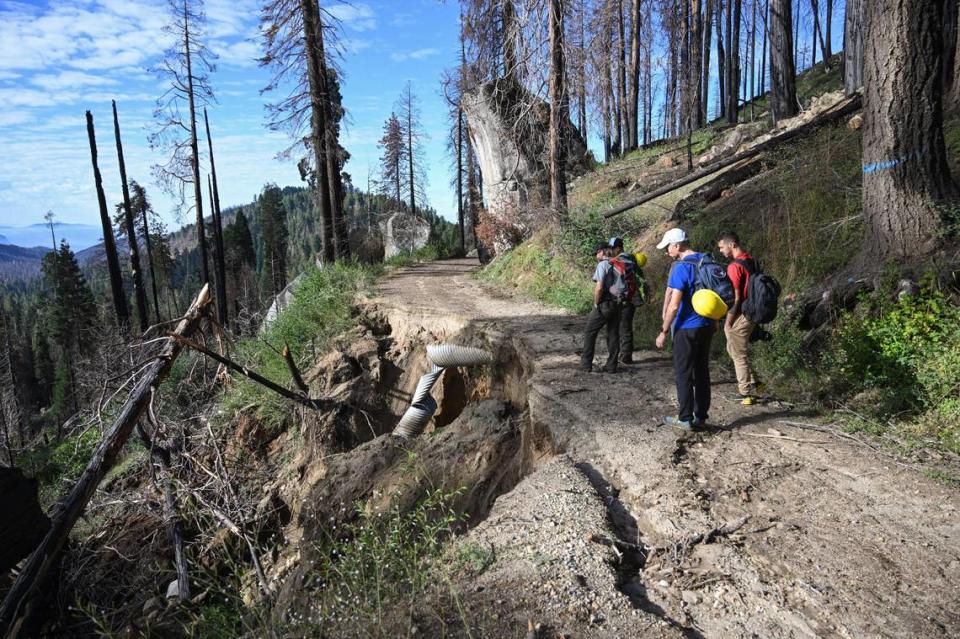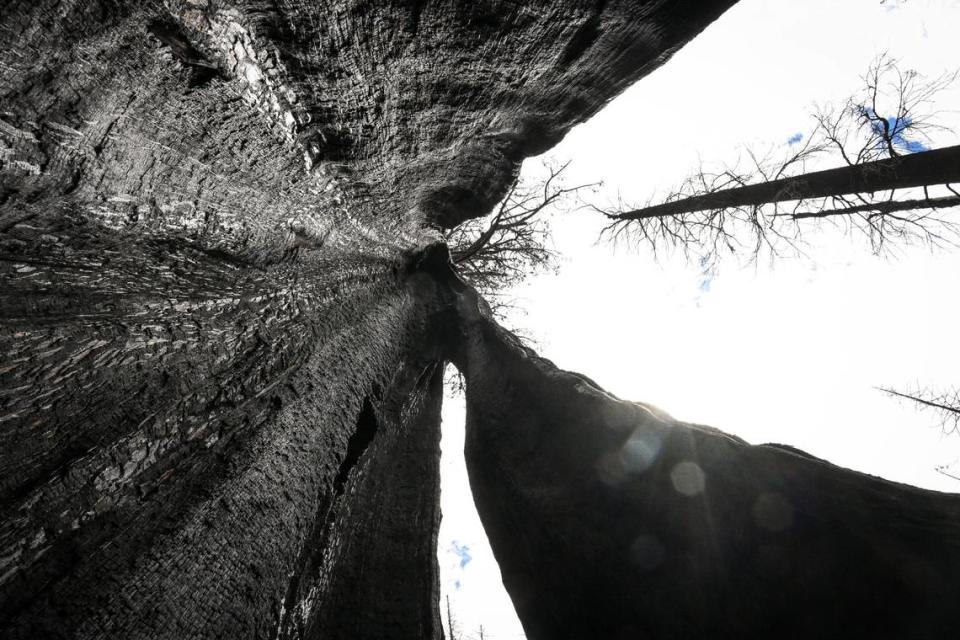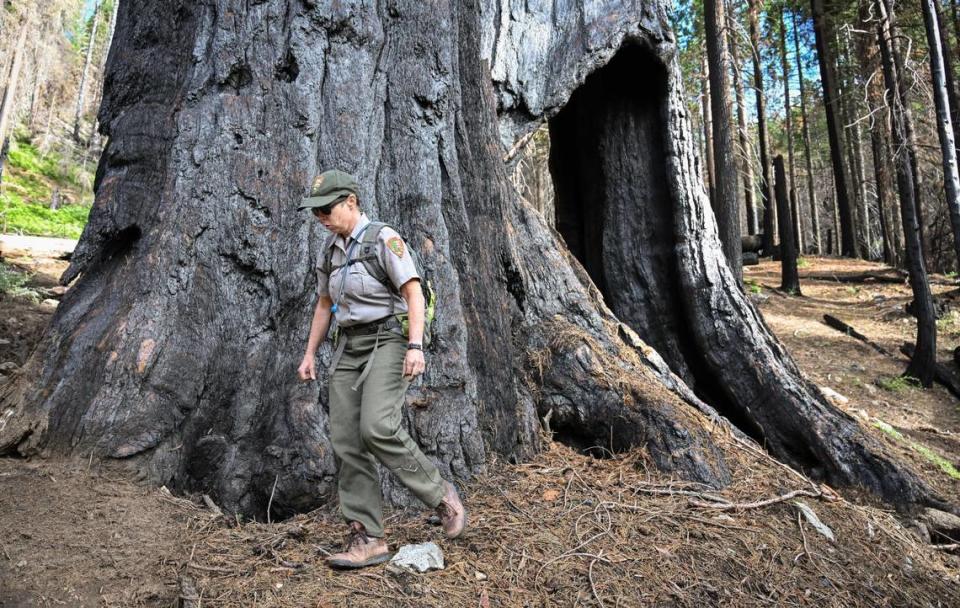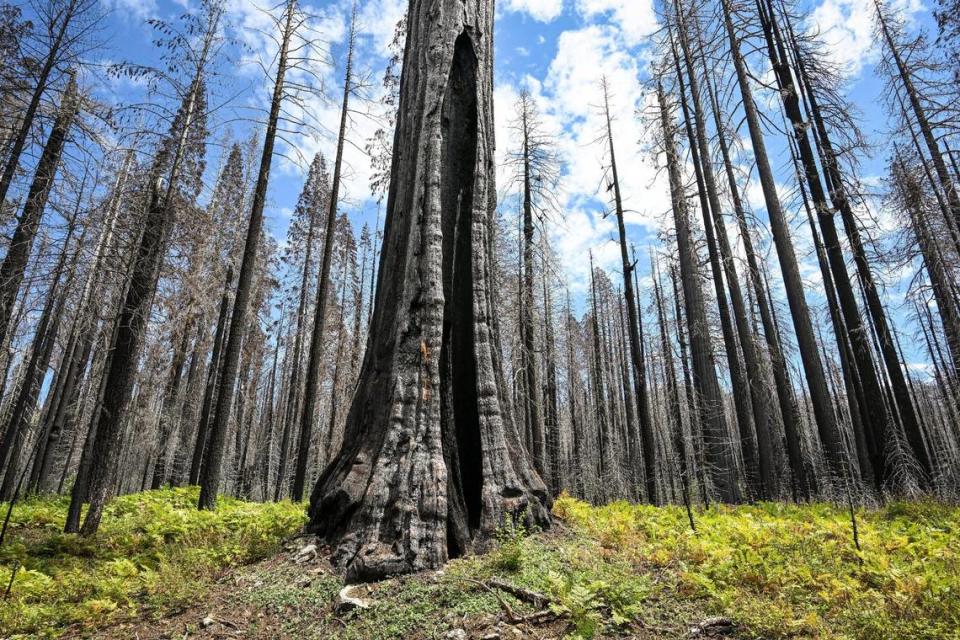This Sierra giant sequoia grove wasn’t completely torched by wildfire. It should reopen | Opinion
Standing at the trailhead parking lot in one of the world’s largest giant sequoia groves, everything seems eerily normal.
In this particular nook of Redwood Mountain Grove, scorched evidence is barely visible from the 2021 KNP Complex Fire that burned through 16 giant sequoia groves inside Sequoia & Kings Canyon National Parks.
But if you’ve come this far, driven the Generals Highway south of Highway 180 and hiked down a closed dirt road, you’ve already seen countless charred trees.
Enough to know how fortunate it is that the entire Redwood Mountain Grove — including each of the estimated 5,500 mature giant sequoias growing within the national park boundaries — weren’t burned to a crisp.
If anything, fire is an unpredictable beast.
Opinion
Just a 1½-hour drive from Fresno, Redwood Mountain Grove (often referred to as Redwood Canyon) is a special place in the Sierra Nevada to myself and many others. Practically a secret in the days before Google Maps and alltrails.com.
Besides giant sequoias, including the named Hart and Roosevelt Trees, its two connected loop trails take hikers along gurgling forest creeks and through areas adorned with ferns, dogwoods and lupine. (Beneath the ground lies California’s longest cavern: the 17-mile Lilburn Cave.) Whenever someone asks for a nearby hike recommendation, that’s where I send them.
Due to safety concerns – you don’t want to be standing beneath a giant sequoia when one of its branches suddenly comes crashing down – Redwood Mountain Grove has been closed to the public for nearly two years since the fire. Last spring, access was further restricted when floods and mudslides washed out a section of the 2-mile road from the Generals Highway.
Still, based on my own impressions from a recent media tour, this is not a place that should be made off-limits permanently, or even indefinitely, by park officials.
Much of Redwood Mountain Grove can still be, and should still be, safely enjoyed after the access road is repaired. Which admittedly might take a while, given the massive amount of road damage that Sequoia and Kings Canyon sustained this year.
In fact, it would serve as an ideal location for the park service to educate the public about the recent spate of high-intensity wildfires caused by climate change and seven decades of overzealous fire suppression.
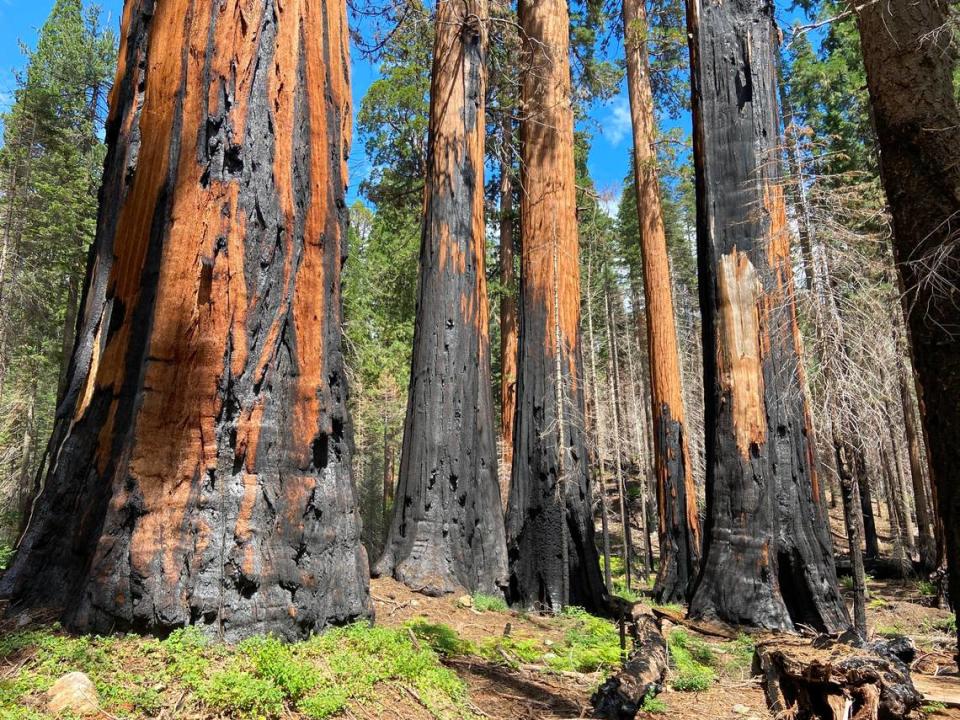
Early site for prescribed burning
Redwood Mountain Grove actually extends beyond the park boundaries. Portions also lie within the Sequoia National Forest and the UC Berkeley-owned Whitaker’s Forest, where in the 1960s forest scientists (in what at the time was considered rogue thinking) conducted the Sierra’s first prescribed burning since Native American tribes made it a regular practice.
The KNP Complex Fire burned through 82% of the grove’s 2,670-acres, according to satellite imagery. While much of that was low- and medium-intensity fire, the kind that giant sequoias depend on to propagate the species, roughly 410 acres were later surveyed as high-intensity.
In these high-intensity burn areas few, if any, mature sequoias survived. Some resemble blackened, hollowed-out match sticks, a sad and depressing sight.
Redwood Mountain Grove is one of two giant sequoia groves where park officials and scientists propose to replant, carefully and shoveled by hand, thousands of 6- to 8-inch-tall sequoia seedlings. A decision on this somewhat divisive plan is expected in October – the ideal month to plant seedlings due to the expectation of precipitation – and I’ll have more to say about that in the coming weeks.
For now, it was enough (and somewhat of a relief) to see that one of my favorite forests didn’t entirely burn.
“We definitely got lucky,” said Christy Brigham, the devoted chief scientist for Sequoia and Kings Canyon National Parks, who led Thursday’s hiking tour.
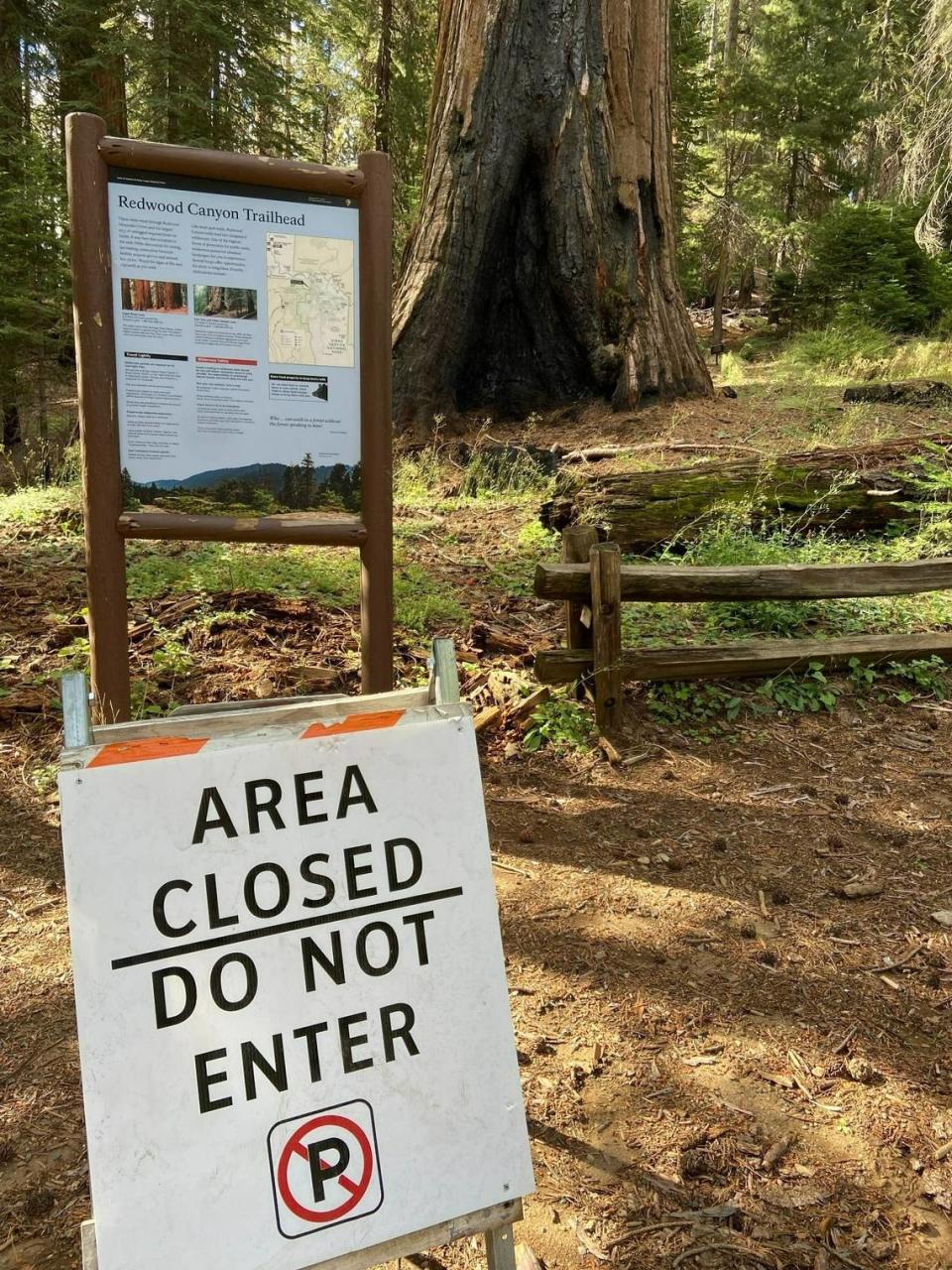
Scenery still picturesque
Our group hiked down and up the same middle section of the Hart Tree Loop, so I didn’t get to see how the two perimeter trails fared. I asked Brigham specifically about a cluster of monarch giant sequoias along the Sugar Bowl Loop, including a couple truly unique and magnificent specimens. That area, to my great regret, was severely burned.
Still, on the trail we hiked, the scenery was as picturesque as ever. Thanks to both the fire and the recent abundance of snow and rain, the forest undergrowth is particularly lush and green.
Most of the giant sequoias we hiked past in the canyon’s upper section sported blackened trucks and green canopies. There were also a couple fallen monarchs that lay shattered across the trail, exposing jagged chunks of wood that were surprisingly light.
Not until the bottom of the canyon, after a 2-mile descent from the trailhead, where the three trails reconnect and the terrain flattens, did we reach the high-intensity burn zone. At this point, we were instructed to don hard hats and proceed with caution.
Redwood Mountain Grove isn’t completely off limits. Those who wish to visit (and don’t mind an extra 4 miles of hiking) can request permission.
Regardless, the park service should make restoring full access a priority. While educating the public about how wildfire more destructive than any previously recorded killed nearly one-fifth of the world’s giant sequoias.
With new interpretive displays and ranger-led tours, let future visitors know the whole story.
